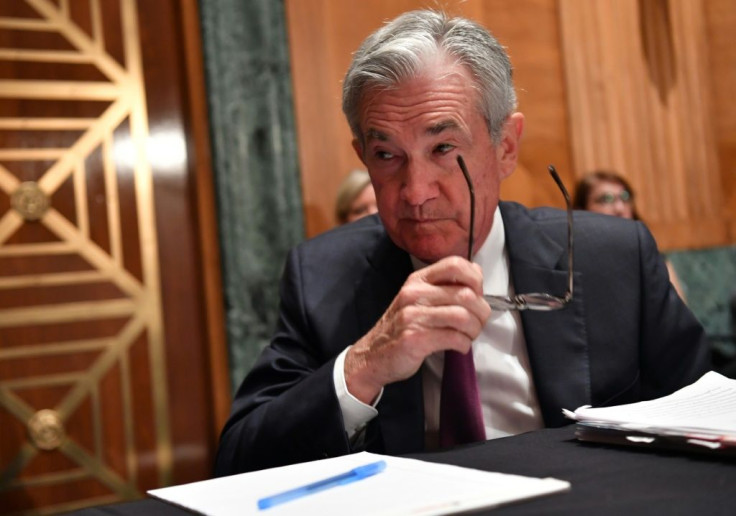Fed May Hint At Ending Stimulus, But No Big Moves Expected
Will they or won't they? Markets worldwide will be holding their collective breaths on Wednesday as they await the Federal Reserve's decision on whether it will begin to close the taps on its monetary stimulus.
The growing consensus is that the much-anticipated first step will not be announced until November and ultimately begin in December.
But Fed Chair Jerome Powell could still provide details on the plan to start to taper the massive bond buying program that kept the US financial market from collapsing during the worst of the Covid-19 pandemic.
The policy-setting Federal Open Market Committee (FOMC) opened its second day of deliberations on Wednesday morning, and will announce its decision at 1800 GMT, after which Powell will hold a press conference where he certainly will be asked to elaborate on the bank's tapering schedule.
Ian Shepherdson, chief economist at Pantheon Macroeconomics, said "it seems reasonable to expect Chair Powell to drop some pretty unsubtle hints that a decision in November is a good bet."
However, "We suspect his remarks will be sprinkled liberally with caveats, because neither he nor anyone else knows for sure what will happen to the Covid situation over the next six weeks," he said.
The continued spread of the Delta variant of Covid-19, which has slowed the progress in restoring jobs lost during the pandemic, and the impasse in the US Senate over raising the federal borrowing limit and funding the government add elements of uncertainty to the outlook for the world's largest economy.
The Fed's "beige book" report on economic conditions released in advance of the policy meeting noted that the US recovery was continuing but had "downshifted" amid continued infections and a shortage of workers.

When the pandemic hit in March 2020, the Fed slashed its benchmark interest rate and began buying bonds and other securities to ease lending conditions and ensure the financial system would not seize up.
Powell has made it clear the key borrowing rate will remain at zero for some time, until the labor market is sufficiently healed from the downturn.
But with the taper announcement expected, "managing expectations about the first rate hike... will be important," said Rubeela Farooqi of High Frequency Economics.
She said traders also will be watching Fed officials' quarterly economic forecasts which will offer clues as to whether committee members are expecting tighter policy sooner.
But the first step will be for the Fed to reduce the monthly asset purchases currently totaling at least $80 billion in Treasury securities and $40 billion in agency mortgage-backed securities.
Market watchers, as well as hawks on the FOMC, are concerned the stimulus is helping to fuel price increases that may prove more lasting than Powell had predicted.
The Fed's preferred inflation measure, the personal consumption expenditures (PCE) price index, rose at a rapid 4.2 percent pace in July, far above its two percent goal.
"A growing number of FOMC members are correctly becoming concerned that the strong rebound in aggregate demand, stemming from the unprecedented monetary and fiscal stimulus, has been a culprit in pushing up inflation, and, if aggregate demand continues to grow solidly, high inflation will persist," said Mickey Levy of Berenberg Capital Markets.
US stock markets bounced higher in early trading, but that likely was less to do with monetary policy and more over relief that debt-laden Chinese real estate giant Evergrande seems to have averted collapse.
© Copyright AFP 2024. All rights reserved.











